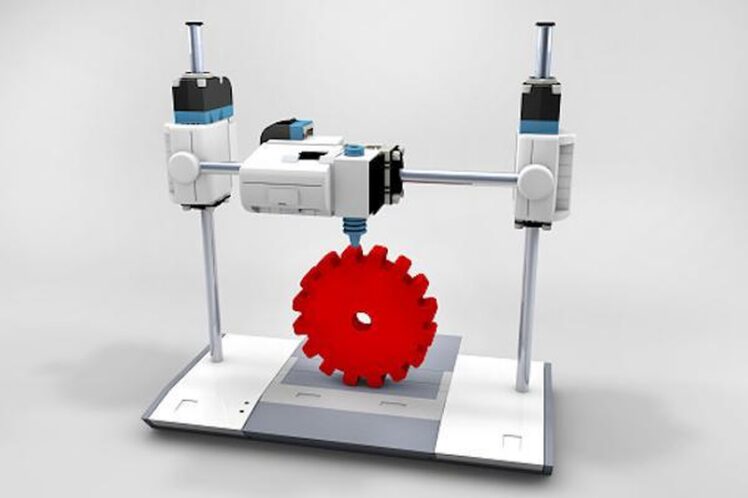How 3D Printing Revolutionizes Mold Manufacturing Techniques

In manufacturing engineering, the advancement of 3D printing has done a great transformation in mold manufacturing techniques. Traditional low-volume manufacturing of CNC turned parts may often involve complex processes, lengthy lead times, and high manufacturing costs. However, 3D printing enables innovation over CNC turned parts by enabling rapid prototyping, and intricate design customization.
Shorten the Mold Manufacturing Cycle

3D printing is changing mold manufacturing in automotive parts manufacturing by reducing the lengthy production cycles. 3D printing uses an approach that is called additive approach that involves the layering of materials to construct intricate designs rapidly. These speeds up the prototyping process and testing phases and also minimizes the time required for product development.
In the automotive industry, 3D printing has helped in the mold manufacturing process for customized automotive parts manufacturing.
Traditionally the manufacturing of an intake manifold involves intricate machining processes or casting methods that take more time and are also very expensive. With the help of 3D printing, the manufacturers are now able to produce intake manifolds with intricate internal geometries optimized for airflow efficiency. Particularly, by using advanced materials like high-temperature thermoplastics or even metal alloys manufacturers can now produce intricate and customized molds directly from digital designs.
This shift to 3D printing in mold manufacturing for intake manifolds is giving a number of advantages to the automotive industry such as rapid prototyping, customization, reducing the lead time, and cost efficiency.
Enhancing Rapid Prototyping Through Customized Molds

3D printing is proven to be a revolutionary tool in mold design specifically in handling complex geometries and customization.
Traditionally the use of CNC turned parts and injection molding face difficulty in efficiently producing the molds for components with complex internal structures. However, 3d printing using the technique of layer-by-layer deposition of material allowing for the fabrication of complex shapes and internal structures.
In the aerospace industry, the Turbomachinery components such as blades and vanes require complex molds for production. 3D printing is changing the manufacturing of turbomachinery components by giving an in-depth understanding of design complexity, reduced material waste, customization, and rapid prototyping capabilities.
It helps in the creation of lightweight lattice structures within turbomachinery components without compromising on strength. This weight reduction is very important in aerospace applications where lightweight components contribute to fuel efficiency and overall performance.
3D printing helps in the manufacturing of turbine blades with complex internal cooling channels and aerodynamic shapes. This result in the reduction of lead time and also enhance the efficiency of the turbine.
Optimization Tools are More Ergonomic and Have the Lowest Performance

The high levels and capabilities of 3D printing have helped in the creation of highly customized and optimized tools that prioritize ergonomics and performance. The achievement of ergonomic optimization in tools through 3D printing is possible due to the technology’s unique additive manufacturing process. This flexibility in design helps in the manufacturing of complex geometries, lightweight structures, and tailored features that increase ergonomic functionality.
To check how 3D printing optimizes tools for ergonomics in the production of customized wrench handles. Traditionally, the wrench handles are often standardized, and also, it’s not easy to diverse hand sizes and preferences of users. With the help of 3D printing, the manufacturers can design and produce wrench handles with suitable grips that align with the natural shape of the user’s hand.
This customization helps in making it more comfortable but also improves torque application and overall tool control. Moreover, 3D printing also helps in the addition of tactile features such as anti-slip surfaces or soft-touch materials directly into the tool design. These features increase the grip and reduce the likelihood of hand strain or injury during use.
Reducing Lead Times and Enhancing Cost Efficiency in Mold Production

3D printing technique ultimately allows the manufacturer to bring products to market faster and respond swiftly to changing demands.
Automobile and aerospace parts manufacturers often need complex structures and rapid alterations in making a mold for dashboard panels, interior trims, and complex engine parts, and 3D printing technology reduces the production time of brackets and connectors for automobiles and enables the manufacturer to better look at overall material usage, manufacturing time, and production cost.
3D printing is helpful in the direct manufacturing of molds without the need for expensive and time-consuming tooling. Traditional machining approaches often involve, expensive tooling, machining, and surface finishing techniques which increase the overall production time.
However, 3-D printing uses process Technologies such as Stereolithography (SLA) or Selective Laser Sintering (SLS) used in the rapid creation of intricate molds with fine details that also reduce the need for time-consuming manual adjustments. Techniques like Fused Deposition Modeling (FDM) or Digital Light Processing (DLP) provide cost-effective alternatives for creating molds with various materials also including thermoplastics and resins.
An example of how 3D printing reduces the lead time and enhances cost efficiency lies in the production of injection molds for plastic components. Traditionally creating injection molds involves CNC machining or EDM (Electrical Discharge Machining) processes that demand skilled labor and extensive lead times. With 3D printing and using high-performance thermoplastics, the manufacturers can produce the injection molds directly.
That helps in reducing both time and cost of production. This is specifically helpful for short production runs or prototyping phases where the cost-effectiveness of traditional methods is limited.
Conclusion
In conclusion, 3D printing has immensely created a big shift in mold manufacturing from CNC-turned parts. It is helping the manufacturing industry in shortening production cycles, enabling rapid prototyping, and facilitating the creation of intricate customized molds. The technology’s impact extends to tool optimization which helps in making ergonomic designs and enhanced performance.
Notably, 3D printing minimizes lead times and also increases cost efficiency by eliminating the need for extensive tooling. This transformative approach is a new era in manufacturing that is changing the industries with a high level of flexibility and efficiency in mold production and also ultimately easing the field of design and manufacturing processes.





